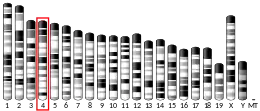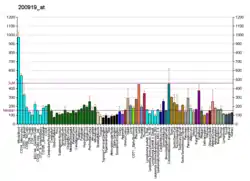| PHC2 | |||||||||||||||||||||||||||||||||||||||||||||||||||
|---|---|---|---|---|---|---|---|---|---|---|---|---|---|---|---|---|---|---|---|---|---|---|---|---|---|---|---|---|---|---|---|---|---|---|---|---|---|---|---|---|---|---|---|---|---|---|---|---|---|---|---|
| Identifiers | |||||||||||||||||||||||||||||||||||||||||||||||||||
| Aliases | PHC2, EDR2, HPH2, PH2, polyhomeotic homolog 2 | ||||||||||||||||||||||||||||||||||||||||||||||||||
| External IDs | OMIM: 602979 MGI: 1860454 HomoloGene: 75090 GeneCards: PHC2 | ||||||||||||||||||||||||||||||||||||||||||||||||||
| |||||||||||||||||||||||||||||||||||||||||||||||||||
| |||||||||||||||||||||||||||||||||||||||||||||||||||
| |||||||||||||||||||||||||||||||||||||||||||||||||||
| |||||||||||||||||||||||||||||||||||||||||||||||||||
| |||||||||||||||||||||||||||||||||||||||||||||||||||
| Wikidata | |||||||||||||||||||||||||||||||||||||||||||||||||||
| |||||||||||||||||||||||||||||||||||||||||||||||||||
Polyhomeotic-like protein 2 is a protein that in humans is encoded by the PHC2 gene.[5][6][7]
Function
In Drosophila melanogaster, the 'Polycomb' group (PcG) of genes are part of a cellular memory system that is responsible for the stable inheritance of gene activity. PcG proteins form a large multimeric, chromatin-associated protein complex. The protein encoded by this gene has homology to the Drosophila PcG protein 'polyhomeotic' (Ph) and is known to heterodimerize with EDR1 and colocalize with BMI1 in interphase nuclei of human cells. The specific function in human cells has not yet been determined. Two transcript variants encoding different isoforms have been found for this gene.[7]
Interactions
PHC2 has been shown to interact with MAPKAPK2,[8] PHC1,[5][9] BMI1[5] and MCRS1.[9]
References
- 1 2 3 GRCh38: Ensembl release 89: ENSG00000134686 - Ensembl, May 2017
- 1 2 3 GRCm38: Ensembl release 89: ENSMUSG00000028796 - Ensembl, May 2017
- ↑ "Human PubMed Reference:". National Center for Biotechnology Information, U.S. National Library of Medicine.
- ↑ "Mouse PubMed Reference:". National Center for Biotechnology Information, U.S. National Library of Medicine.
- 1 2 3 Gunster MJ, Satijn DP, Hamer KM, den Blaauwen JL, de Bruijn D, Alkema MJ, van Lohuizen M, van Driel R, Otte AP (Apr 1997). "Identification and characterization of interactions between the vertebrate polycomb-group protein BMI1 and human homologs of polyhomeotic". Molecular and Cellular Biology. 17 (4): 2326–35. doi:10.1128/mcb.17.4.2326. PMC 232081. PMID 9121482.
- ↑ Tonkin E, Hagan DM, Li W, Strachan T (Oct 2002). "Identification and characterisation of novel mammalian homologues of Drosophila polyhomeoticpermits new insights into relationships between members of the polyhomeotic family". Human Genetics. 111 (4–5): 435–42. doi:10.1007/s00439-002-0814-3. PMID 12384788. S2CID 22192470.
- 1 2 "Entrez Gene: PHC2 polyhomeotic homolog 2 (Drosophila)".
- ↑ Yannoni YM, Gaestel M, Lin LL (Apr 2004). "P66(ShcA) interacts with MAPKAP kinase 2 and regulates its activity". FEBS Letters. 564 (1–2): 205–11. doi:10.1016/S0014-5793(04)00351-5. PMID 15094067. S2CID 43606580.
- 1 2 Rual JF, Venkatesan K, Hao T, Hirozane-Kishikawa T, Dricot A, Li N, Berriz GF, Gibbons FD, Dreze M, Ayivi-Guedehoussou N, Klitgord N, Simon C, Boxem M, Milstein S, Rosenberg J, Goldberg DS, Zhang LV, Wong SL, Franklin G, Li S, Albala JS, Lim J, Fraughton C, Llamosas E, Cevik S, Bex C, Lamesch P, Sikorski RS, Vandenhaute J, Zoghbi HY, Smolyar A, Bosak S, Sequerra R, Doucette-Stamm L, Cusick ME, Hill DE, Roth FP, Vidal M (Oct 2005). "Towards a proteome-scale map of the human protein-protein interaction network". Nature. 437 (7062): 1173–8. Bibcode:2005Natur.437.1173R. doi:10.1038/nature04209. PMID 16189514. S2CID 4427026.
Further reading
- Satijn DP, Gunster MJ, van der Vlag J, Hamer KM, Schul W, Alkema MJ, Saurin AJ, Freemont PS, van Driel R, Otte AP (Jul 1997). "RING1 is associated with the polycomb group protein complex and acts as a transcriptional repressor". Molecular and Cellular Biology. 17 (7): 4105–13. doi:10.1128/mcb.17.7.4105. PMC 232264. PMID 9199346.
- Gunther M, Laithier M, Brison O (Jul 2000). "A set of proteins interacting with transcription factor Sp1 identified in a two-hybrid screening". Molecular and Cellular Biochemistry. 210 (1–2): 131–42. doi:10.1023/A:1007177623283. PMID 10976766. S2CID 1339642.
- Levine SS, Weiss A, Erdjument-Bromage H, Shao Z, Tempst P, Kingston RE (Sep 2002). "The core of the polycomb repressive complex is compositionally and functionally conserved in flies and humans". Molecular and Cellular Biology. 22 (17): 6070–8. doi:10.1128/MCB.22.17.6070-6078.2002. PMC 134016. PMID 12167701.
- Yannoni YM, Gaestel M, Lin LL (Apr 2004). "P66(ShcA) interacts with MAPKAP kinase 2 and regulates its activity". FEBS Letters. 564 (1–2): 205–11. doi:10.1016/S0014-5793(04)00351-5. PMID 15094067. S2CID 43606580.
- Beausoleil SA, Jedrychowski M, Schwartz D, Elias JE, Villén J, Li J, Cohn MA, Cantley LC, Gygi SP (Aug 2004). "Large-scale characterization of HeLa cell nuclear phosphoproteins". Proceedings of the National Academy of Sciences of the United States of America. 101 (33): 12130–5. Bibcode:2004PNAS..10112130B. doi:10.1073/pnas.0404720101. PMC 514446. PMID 15302935.
- Wang H, Wang L, Erdjument-Bromage H, Vidal M, Tempst P, Jones RS, Zhang Y (Oct 2004). "Role of histone H2A ubiquitination in Polycomb silencing". Nature. 431 (7010): 873–8. Bibcode:2004Natur.431..873W. doi:10.1038/nature02985. PMID 15386022. S2CID 4344378.
- Voncken JW, Niessen H, Neufeld B, Rennefahrt U, Dahlmans V, Kubben N, Holzer B, Ludwig S, Rapp UR (Feb 2005). "MAPKAP kinase 3pK phosphorylates and regulates chromatin association of the polycomb group protein Bmi1". The Journal of Biological Chemistry. 280 (7): 5178–87. doi:10.1074/jbc.M407155200. PMID 15563468.
- Stelzl U, Worm U, Lalowski M, Haenig C, Brembeck FH, Goehler H, Stroedicke M, Zenkner M, Schoenherr A, Koeppen S, Timm J, Mintzlaff S, Abraham C, Bock N, Kietzmann S, Goedde A, Toksöz E, Droege A, Krobitsch S, Korn B, Birchmeier W, Lehrach H, Wanker EE (Sep 2005). "A human protein-protein interaction network: a resource for annotating the proteome". Cell. 122 (6): 957–68. doi:10.1016/j.cell.2005.08.029. hdl:11858/00-001M-0000-0010-8592-0. PMID 16169070. S2CID 8235923.




